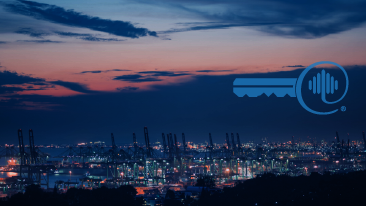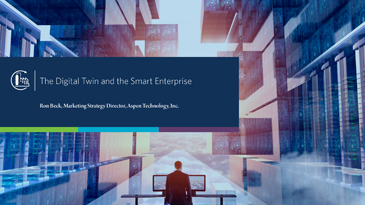Digital Twins. Sounds interesting. Too bad, but we could never do that at my plant.
As a newly graduated chemical engineer working in process control in the late 90s, I heard of something called APC, advanced process control. I was told that refineries used it to optimize their processes. That they would use live economic data to determine their production blends based on how much different products were selling for on any given day.
In the high volume, low margin world of global refining, companies increasing efficiency by a couple percentage points here or there could add millions of dollars a year. It was fascinating stuff. People had the job title of APC Engineer. They made entire careers out of tweaking and monitoring the black boxes that made the magic. The engineer in me loved the idea of playing with the cool tech involved. I also liked the idea of being able to make such a dramatic financial impact on the company.
But I didn’t work for a global refining company. I worked for a specialty chemical producer. In my mind, I footnoted APC and other similar technologies as something interesting I might see if I ever worked for a refiner.
Fast forward to today. I have worked for global refining companies, pharmaceutical companies, pipeline operators, paper mills, a host of chemical companies (commodity, fine, specialty, biotech, etc.), and manufacturers of a variety of industrial goods. I eventually became a consulting engineer working for companies in a wide variety of industries.
I came to recognize some of the unique challenges these companies face, but there were also a lot of common problems and shared frustrations across industries. Specifically, I started to recognize certain long-held beliefs in various industry sectors about how things have to be done or what would and would not work in “my” industry. Most of these ideas started from some basic truths, but like any idea, they need to be periodically challenged.
If you know the story of Chesterton’s fence, you may be yelling, “We do things this way for a reason!” But the advice in that story is not to leave all fences in place. It is to examine the purpose of the fence. Does it still perform the function it was meant to perform? Is it still the best solution for the current problems? Maybe it is, maybe all the reasons it was built in the first place are still true, but maybe not.
Returning to the topic-at-hand, modern industrial plants, we hear more press these days about Digitalization, Digital Twins, Industry 4.0 and other new terms for technologies like process modeling, multi-variate analysis, equipment predictive maintenance, reliability modeling and the old standby – APC. However, there is still a sense that those technologies are for the “big guys” like refineries. They are interesting technologies, but not really affordable for the rest of us.
So, let’s look at that fence, or at least the major variables in our equation:
Are Your Savings > Your Costs?
On one side of the equation, software technology costs have fallen, and software improvements mean that while expertise is still required, the care and feeding of your software package is most likely not a full-time job.
On the other side, capital costs, labor costs and raw material costs have increased, quality specifications are tighter and competition has most likely intensified. Management wants you to do more with less. Continuous improvement is great, but it means that what was acceptable ten years ago, five years ago, or even last year won’t cut it today.
Are you a continuous or batch plant? How many tons, pounds or batches of off-spec material did you make last year? Break any equipment? Any planned downtime? If so how much? What was the lost revenue for disposing/reworking off-spec material, including raw materials, energy costs, labor, environmental fines, contract penalties, etc.? What was the cost of damaged equipment, including parts, third party services, procurement costs, overtime for repairs or playing catch up to get your production back on schedule?
Now, let’s look at your numbers and order of magnitude.
Less than $10K/year? Check your calculations again.
Between $10K-100K/year? Congratulations, you’re running a near perfect plant. Don’t change a thing.
Between $100K-$1M/year? Digitalization technologies are within your reach. Take a closer look to identify your pain points and see what makes sense for your plant. Certain technologies may help while others may not be cost effective. Dig deeper into the numbers and meet with a digitalization provider to see what makes financial sense.
Over $1M/year? Your facility would likely benefit from multiple digitalization technologies with a very short payback period. Schedule time with your digitalization provider to discuss which issues should be tackled first for maximum benefit.
Digital Twins. Sounds interesting. We should do that at my plant.
To learn more about how digital twins can help plants get the most out of their assets, view the on demand webinar, How Digital Transformation at Engineering Firms Will Be a Big Win for Plant Owners.




Leave A Comment